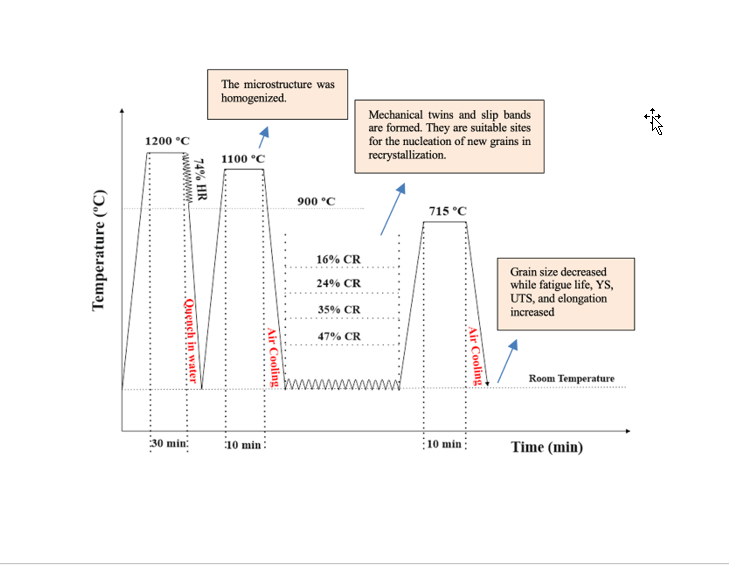Mon, Dec 8, 2025
[Archive]
Volume 20, Issue 1 (March 2023)
IJMSE 2023, 20(1): 1-14 |
Back to browse issues page
Download citation:
BibTeX | RIS | EndNote | Medlars | ProCite | Reference Manager | RefWorks
Send citation to:



BibTeX | RIS | EndNote | Medlars | ProCite | Reference Manager | RefWorks
Send citation to:
Abankar M, Arabi H, Salehi M T, Abbasi M. Effects of Thermomechanical Treatment on Microstructural and Mechanical Behavior of an Austenitic Steel Contains 1.4% Al and 17.5% Mn. IJMSE 2023; 20 (1) :1-14
URL: http://ijmse.iust.ac.ir/article-1-2937-en.html
URL: http://ijmse.iust.ac.ir/article-1-2937-en.html
Abstract: (16529 Views)
The aims of this research were to evaluate the effects of different thermomechanical treatments on the microstructure and investigate some of the mechanical properties of a TWIP steel rich in Mn & Al. So, a block of a TWIP steel with nominal composition Fe-17.5Mn-1.36Al-0.8C was cast and then subjected to hot rolling followed by cold rolling and heat treatment. Cold rolling was performed before heat treatment in order to reduce the grain size and improve the tensile and fatigue properties. X-ray diffraction technique was used before and after the heat treatment to evaluate the possibility of any phase formation. No sign of martensitic transformation after cold deformation was observed. However, by increasing the amount of cold deformation, the number of mechanical twins and slip band increased resulted to an increase in hardness and strength. The best tensile and fatigue result were obtained after 47% thickness reduction and annealing at 715˚C for 10 min. Under these conditions, the mean grain size reduced from 138 to 9 μm resulted to an increase in yield strength from 395 to 510 MPa, and the fatigue life improvement from the mean life of 10200 for the cast sample to 21500 cycles for the treated sample, when these samples underwent fatigue tests at a stress range of 650 MPa and R=0. In addition, the diameter and depth of dimples in fracture surfaces decreased by reducing the grain size but the fracture mode was remained ductile and adequate plastic deformation occurred before failure.
Type of Study: Research Paper |
Send email to the article author
| Rights and permissions | |
 |
This work is licensed under a Creative Commons Attribution-NonCommercial 4.0 International License. |








